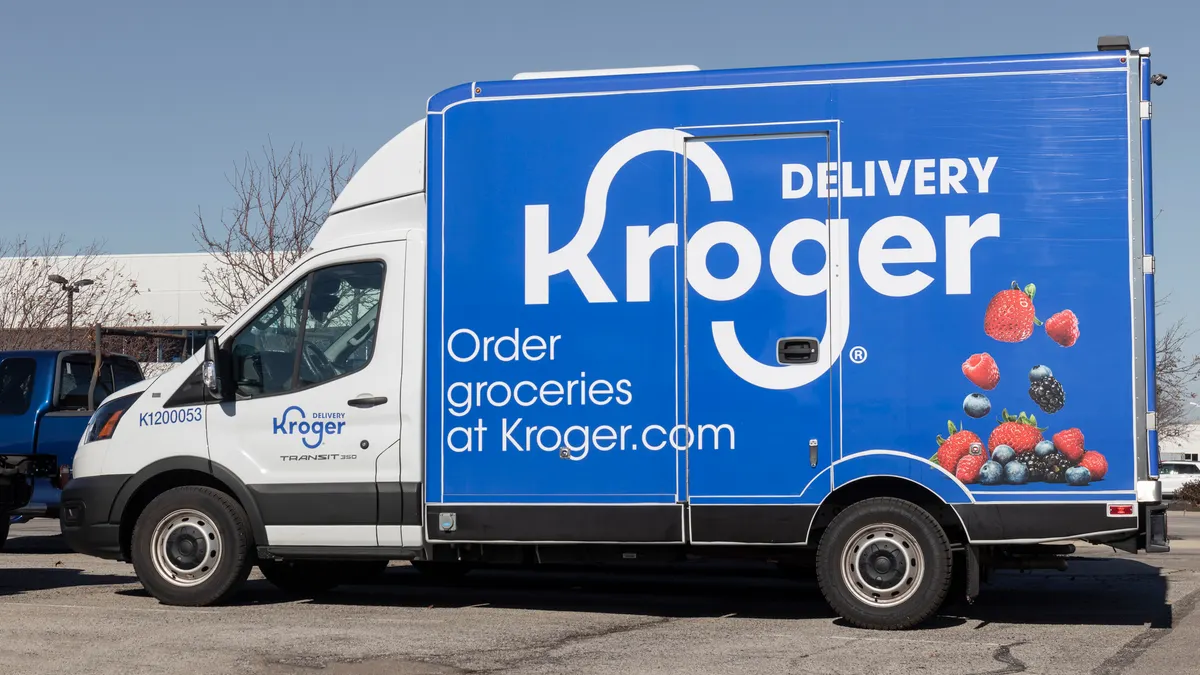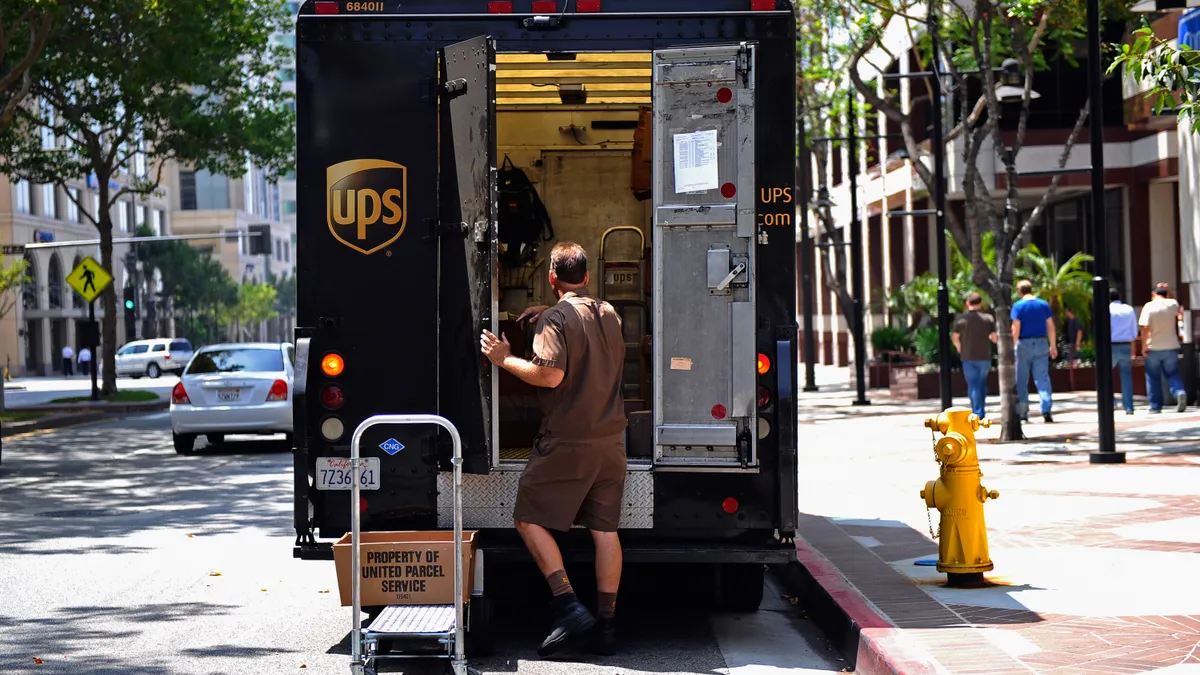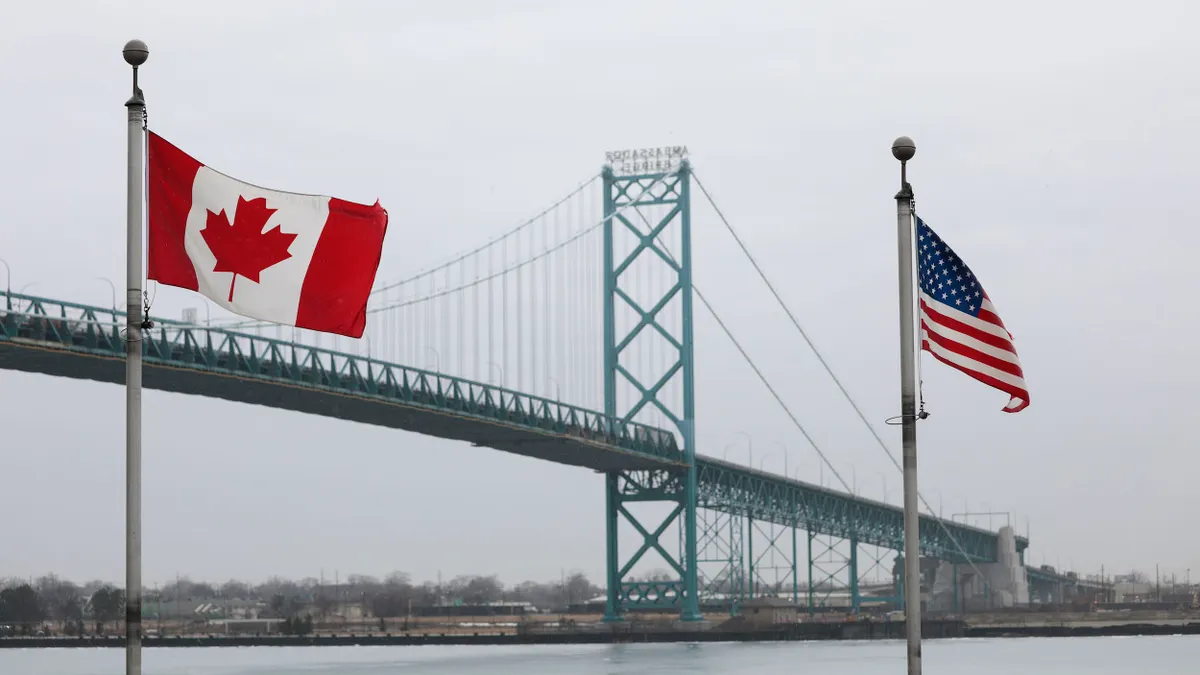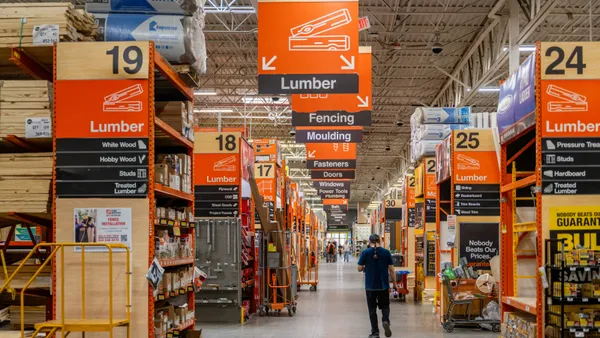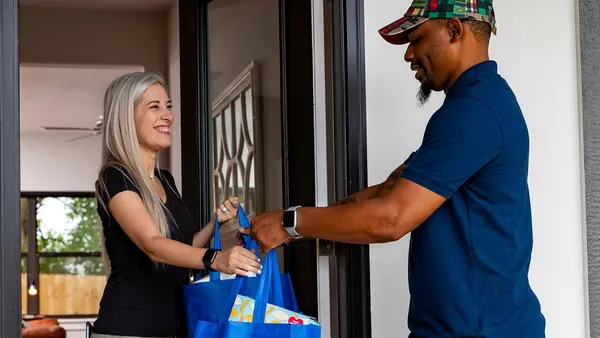Dive Brief:
- Kroger is conducting a “full site-by-site analysis” of its automated order fulfillment network as it looks to improve profitability and reduce costs, interim CEO Ron Sargent said Thursday during the grocer’s second-quarter earnings call.
- The supermarket operator intends to focus on store-level fulfillment as it strives to provide grocery delivery services faster and more efficiently, Sargent said.
- Kroger’s e-commerce sales were up 16% during Q1, and delivery orders outpaced pickup transactions for the first time, according to the interim CEO.
Dive Insight:
Kroger has invested billions of dollars into automated e-commerce infrastructure, but Sargent made clear during the earnings call that the company will depend on individual supermarkets to power its digital growth going forward.
“Stores are our most important asset, and when we use our stores to fulfill online orders, the inventory is closer to customers and the last-mile delivery costs are lower,” Sargent said. “As demand for convenience grows, we can leverage our store footprint to reach new customer segments and expand rapid delivery capabilities without significant capital investments.”
Developed in partnership with U.K.-based automation specialist Ocado, Kroger’s automated e-commerce network features robotic warehouses that connect to smaller facilities known as spokes. After pumping the brakes in 2023 on adding new facilities, Ocado said at the start of this year that it plans to open two customer fulfillment centers with Kroger — one in Charlotte, North Carolina, and one in Phoenix — in fiscal 2026.
“Where we have seen strong demand in high-density areas, these facilities deliver better results than those facilities where density is lower and customer adoption has been slower,” Sargent said about the network, adding, “We are taking a hard look at some of our automated facilities.”
The company will provide an update on the analysis during its next earnings call, he said.



